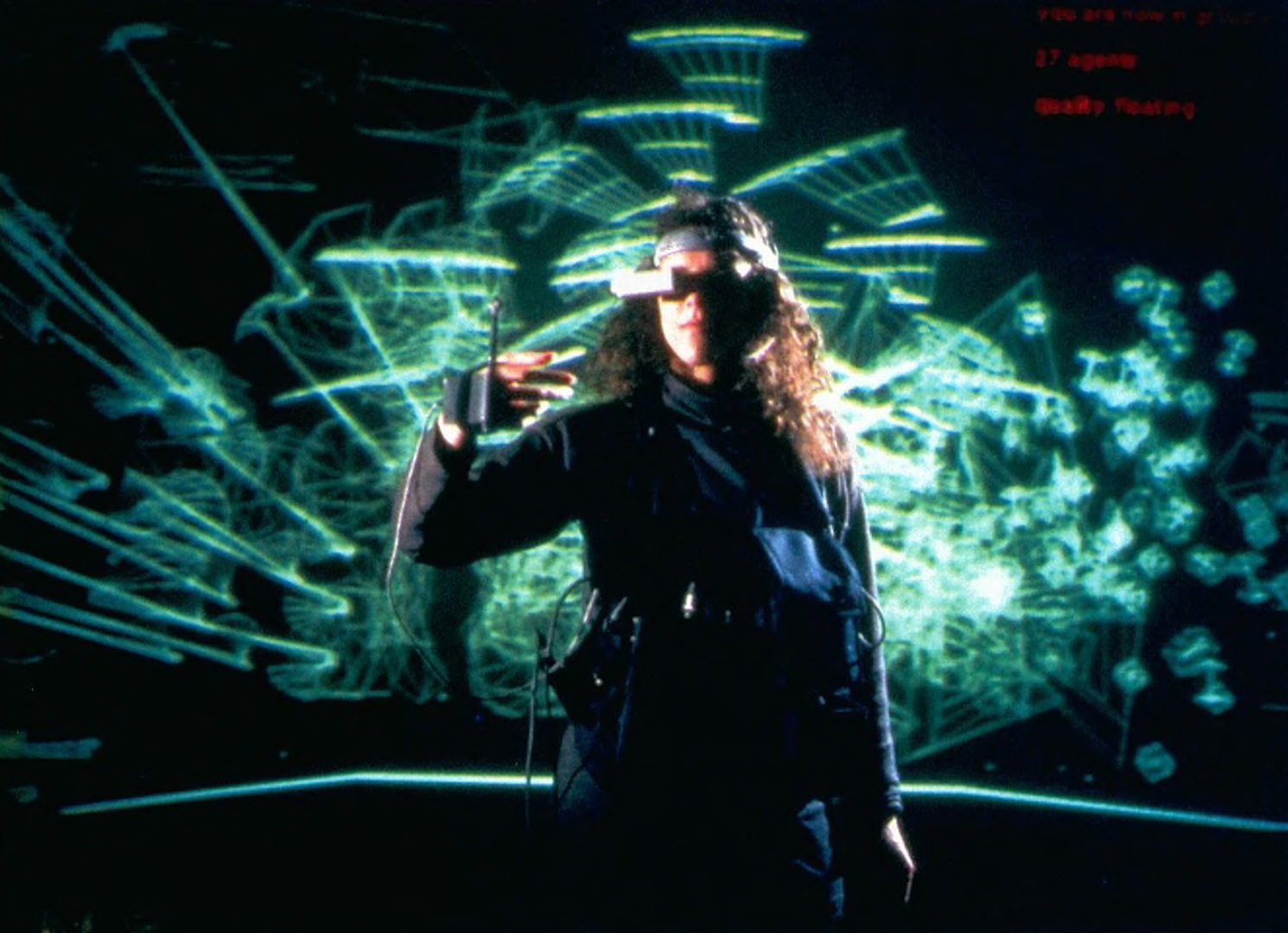“SMDK: Simulation-Space Mosaic of Mobile Data Sounds” by Huebier
Conference:
- SIGGRAPH 1994
-
More from SIGGRAPH 1994:


Type(s):
Entry Number: 03
Title:
- SMDK: Simulation-Space Mosaic of Mobile Data Sounds
Program Title:
- The Edge
Presenter(s):
Collaborator(s):
Project Affiliation:
- Knowbotic Research
Description:
SMDK is a cross-disciplinary project by Knowbotic Research (KR+cF) that results from an exchange of working techniques among media artists, computer musicians, and computer scientists. The interactive environment consists of a database containing sounds from all over the world. Based on their characteristics and simple artificial-life rules, the sounds become mobile elements (agents) and form a self-organizing system comparable to a simple cultural community.
A visitor equipped with a tracking sensor can interactively explore the system in a walk-in room. The speed and type of the visitor’s movements trigger sounds and influence the organization of the sound elements by manipulating their duration, volume, and direction. Through a small headmounted monitor, the visitor receives textual information that aids navigation inside the virtual sound space. A computer generated visualization of the continually changing system, the actions of the visitor, and their bearing on the system can be observed by an audience on a large screen in a separate room.
Realization
The Open, Self-Organizing Database For this project, Knowbotic Research sent out an international call for participation about two months before the exhibition. The collected sound samples (personal, acoustically formulated attitudes towards the world) submitted via computer networks like Internet and CompuServe, or on ordinary audio and DAT tapes, are analyzed both automatically and manually and given 10 different characteristics that reflect acoustically distinguishable features. Next, the sound samples are placed in a database, where they become mobile elements (agents) in real space and their equivalent in virtual space. The behavior of the entire system is determined by the characteristic group forms and by means of a simple artificial life system. There are 10 different groups based on the characteristics assigned to the sound data. Equipped with the three basic degrees of freedom, the agents organize spatially in sound groups that represent one characteristic each, forming an organism that continuously restructures itself. For example, agents may form a group or join a group if they have the appropriate characteristic, or float in space as free agents.
Visitor Navigation in the Action Space
This dynamic system is made accessible to the visitor in the physical action space, part of a larger, darkened room outlined by fiber-optic light cables that show the base boundaries of the space. As a visitor enters the action space, an ultrasonic tracking system spots the visitor’s presence and transmits it to the virtual space. The visitor is equipped with an ultrasonic sensor attached to one hand and a small monitor mounted in front of one eye that provides textual
Opening the System: Real- Time Concert
A sensitive zone in the virtual space surrounds the position of the visitor’s hand. Through this zone, the visitor’s movements activate the original sound information and “compose” sounds by manipulating the duration, volume, and direction of each element. The visitor becomes part of the system, influences its complex behaviour and builds new connections.
Reception by Outside Observers
A large screen located outside the action space displays a rendered, real-time outline of the virtual organism which, in turn, is described in the action space in acoustical and textual terms only. The computer visualizes the overall system and the dialogue between the visitor and the database. Each of the 10 possible groups has its own geometric representation. Once an agent joins a group it adopts the geometric representation of this specific group. The system also shows the current position of the visitor and highlights sounds or agents that are being activated.
Concepts
The chaotic basic structure of SMDK, the self-organization feature, real-time composition and fragmentation of public sound material, continuous visualization of (mathematical) processes, and the openness of the entire system to the outside world through data networks represent a complexity that challenges the visitor to construct his or her own orientation system within an interactive database. Public Knowledge Space The visitor enters a “black space,” a completely unfamiliar situation. Through concurrent active presence in the real space and the virtual space, the visitor empirically recombines the virtual spatial composition into incalculable new contexts of the underlying information volume. The resulting dynamic sound mosaic reconstructs the real space (“real virtuality”). Departing visitors leave behind specific imprints of their experiences, which remain intact until the system is reactivated.
Technoid Aesthetics
Visitors to KR+cF’s environment move in a communication field in which new forms of language have not yet emerged. Development of a nonverbal form of individual knowledge generation draws on aesthetic experience in various encoded public data fields (acoustic, textual, graphical, and numerical). The SMDK information system, too complex to be fully comprehended, represents a shift in delimiting boundaries of technologically supported, ordered systems. It provides an opportunity to expand our perception and arrive at a critically reflected, technoid-aesthetic experience.
Knowbotic Research KR+cF
KR+cF focuses on interdisciplinary projects involving the de-and re-construction of public information systems, unusual forms of perceiving data structures, and new knowledgegeneration approaches. KR+cF’s work is based on immediate confrontation of new artistic strategies with methods of perception and discovery used in other fields of knowledge.




